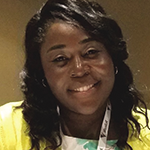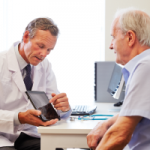ATLANTA—The Hospital for Special Surgery (HSS), headquartered in New York City, uses community-based participatory research (CBPR) models to develop patient programs. One popular self-help program for arthritis patients evolved from a different initiative focused on orthopedic pain management, according to speakers in a session at the 2019 ACR/ARP Annual Meeting.
According to Titilayo Ologhobo, MPH, associate director of outcomes in public and patient education at HSS’s Education Institute, CBPR empowers vulnerable communities to make decisions about the health of their community while helping reduce health disparities, particularly in underserved communities.
“By engaging and collaborating with the community, researchers can identify what the disparities are for that particular community,” said Ms. Ologhobo. “It involves active community participation throughout the process right from the start. Most importantly, it ensures that our interventions are responsive to the community’s actual needs.”
Assess the Community
Before developing a CBPR, a community health needs assessment must be undertaken, Ms. Ologhobo said. In addition to a geographic area, a community can include shared interests, values or characteristics, such as age, gender and occupation.1-4 “A big part of a successful program requires understanding the cultural groups within the community and how best to work with these groups,” said Ms. Ologhobo.
It’s also important to identify key assets and resources that may be available, including people, volunteers, community leaders, and research and academic organizations that may have expertise and data they’re willing to share. “This will help you develop the scope of the project to achieve the greatest impact by leveraging your strengths and not straining your resources,” Ms. Ologhobo said.
In 2019, 11,430 patients, community members and other stakeholders completed surveys (available in the four most prevalent languages spoken in the community) that queried what they thought were the most important health needs HSS could address.

Ms. Ologhobo
HSS Educational Institute staff then conducted eight community forums to share the survey results. “[Community members] were anxious to hear what we uncovered, partially because we kept bugging them to fill out the surveys,” said Ms. Ologhobo. “They were appreciative that we shared the results with them.”
Using a simple 10-point system based on the community’s input on priorities, HSS staff compiled a list of the 25 most important community health needs. That list was then ranked into a top 10 list. “It was unrealistic for us to address all 25 needs,” said Ms. Ologhobo. “We would have been overwhelmed and been stretched too thin and less effective.”
The top 10 items selected for focus were: 1) osteoarthritis; 2) osteoporosis; 3) joint, muscle and bone pain; 4) falls and balance; 5) rheumatoid arthritis; 6) stress and mental health; 7) lifestyle (i.e., poor diet and lack of exercise); 8) fatigue; 9) stiffness; and 10) complementary alternatives to manage pain.
“This has been a very rigorous process,” said Ms. Ologhobo. “Including the community in prioritizing health needs helped aim us in the right direction in selecting public health priorities and guide us in developing and implementing our new programs.”
Robyn Wiesel, MCHES, associate director, public and patient education, HSS Education Institute, said staff have found that the more buy-in you can get and the more partnerships and connections you can make, the further you can scale programs. But relationships change, and new opportunities arise, “so it’s important to evaluate and make the changes and adjustments that become necessary.”
Developing Self-Management Education & Programs
One option being developed at HSS to increase outreach and effectiveness—without straining resources—is self-management programs. These initiatives focus on support and education provided by clinicians and public health practitioners to enhance an individual’s self-efficacy in managing one or more chronic conditions.5-7
“Today, things are really hard for the physician to be the best educator they can be for their patients, especially with time constraints,” said Ms. Wiesel. “So at HSS, we’re developing self-management education programs based on the prioritized health needs of our patients and our community.”



